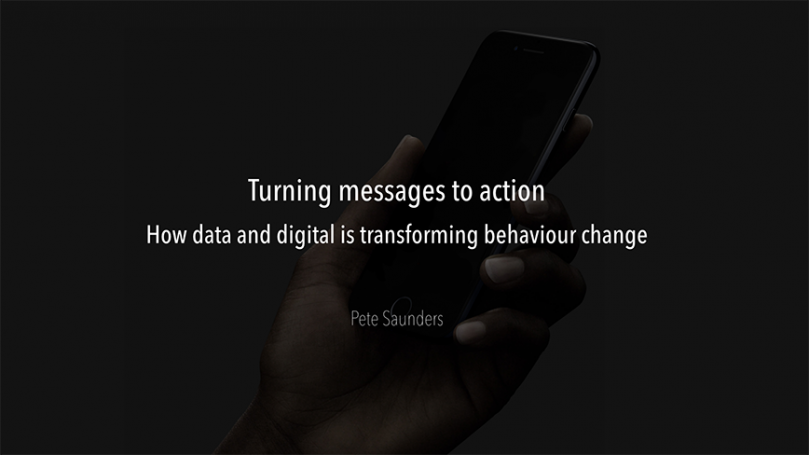
The following is an adaptation of a presentation to fifty Master of Public Health students at Melbourne University. It includes all slides, videos and a rough transcript. It took around an hour, followed by thirty minutes of questions.
Hi everyone and thanks for inviting me along to talk once again.
This is the third time I’ve had the pleasure of speaking to a group like this and I’ve loved it every time.
For me, each year is different. Not just because the world of communications changes so rapidly, but my understanding of where to invest energy and where to create impact has shifted so dramatically, it’s often hard to keep up.
To give you some context to these changes, I want to first quickly cover off a bit of my work history and how I came to be standing here in the first place.
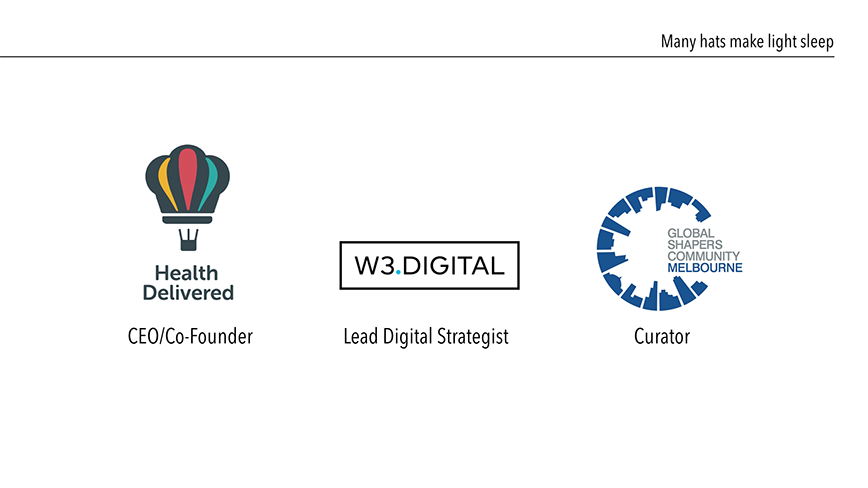
I trained as a graphic designer, completing a Masters degree in Visual Communication. It was there I became fascinated with corporate processes and the ethics of our industry. I investigated the misuse of information in pharmaceutical advertising, and how visual communication could be used as a tool for education. I love storytelling but try not to preach. Storytelling is a way to connect to people on an individual level.
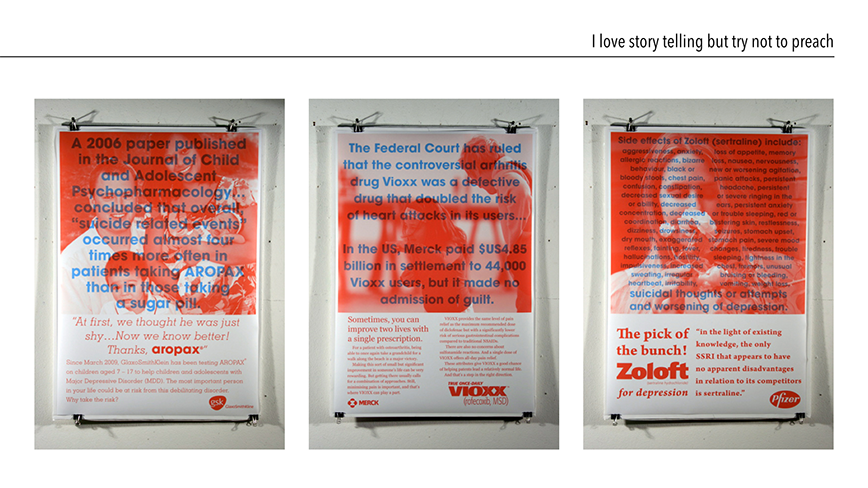
This slide is one of my final installations where I created mock pharmaceutical ads in one colour and overlayed the results of independent clinical research in another colour.
I then constructed giant screens, and installed it in a gallery. When you look through the red lens you only see the blue and vice versa. My intention was to present two sides of a story equally and allow the viewer to draw their own conclusions.
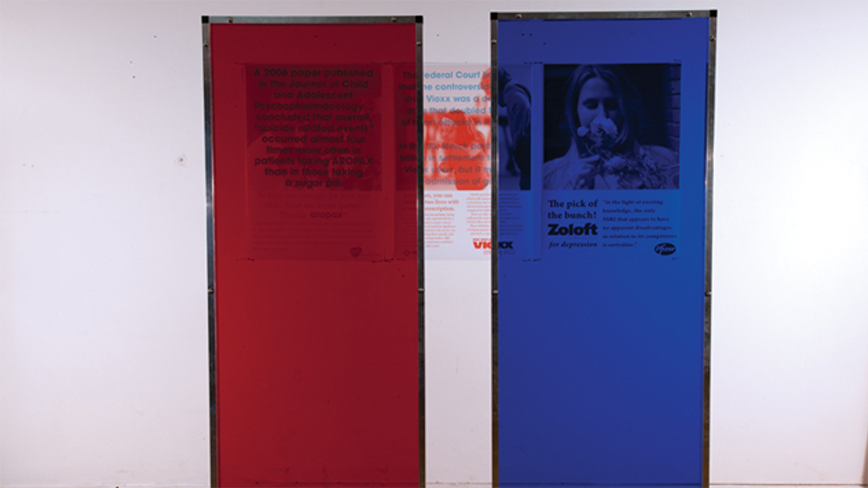
I have always been fascinated by storytelling and the ability to connect on an individual level. When I first worked in the real world, I had a big focus on advertising, particularly across digital channels.
This was when Facebook was first finding its feet and integrated marketing across online and offline touch points was just beginning.
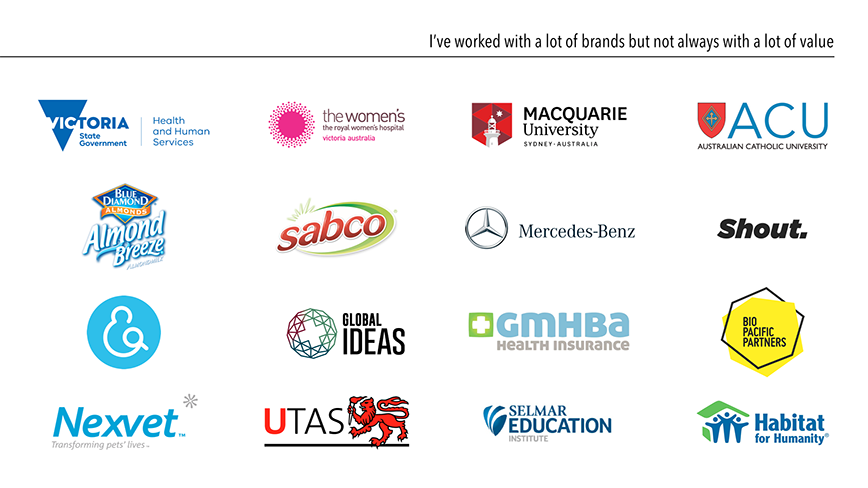
Over the last five years, I have worked across advertising, branding, social media, digital marketing and now I work predominantly in digital product and service development. Three years ago, I was managing the social media strategy for Mercedes-Benz when I was approached to join a start up then called Sonoa. They were developing a consumer driven electronic health record and I was asked to be their director of all things digital.
Over twelve months there, I learned just how complex and fascinating the world of health is, but also that technology would underpin real change. While that company never managed to realise its dreams, it changed my focus to overhauling education and health systems through digital delivery.
I am now known as a digital strategist, however that term is nebulous at best.
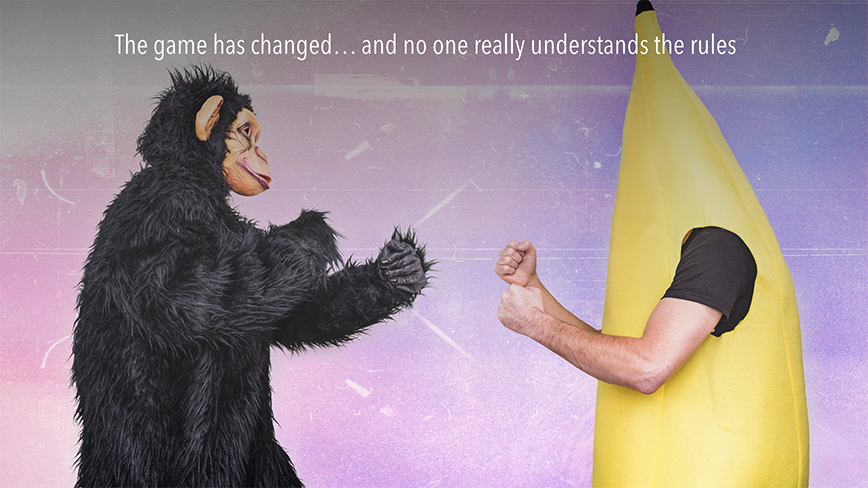
While I love communications and it’s always going to be my background, I have made the concerted effort to change my vocation because I believe that the industry has shifted so dramatically, staying with traditional ways of working is no longer acceptable. It’s nearly impossible to keep up in an industry that reinvents itself every day. Or every minute. Next week Facebook or Google could change their algorithm again, forcing us all to relearn what we knew. No one can be an expect in a field that always changes itself. Anyone who calls themselves a social media guru is an idiot.
I try to be on the front foot and look for trends and changes that I can leverage, hence my fascination with data and digital products. And it’s this realm I want to talk through today.
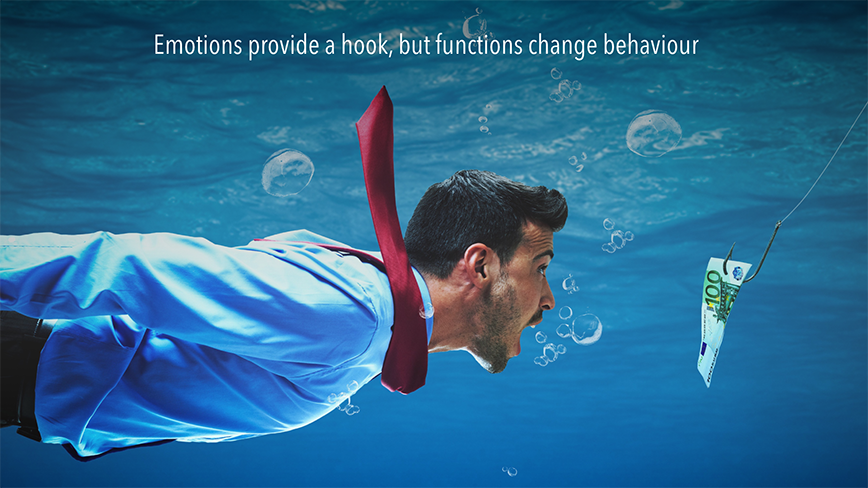
Advertising and communications in general usually relies on an emotional hook.
If you break down an advertisement to its components, you will often find that the first few second are designed to create an emotional response, whether it’s fear, joy, anticipation or familiarity. Then over the course of the ad, this emotional response is further enhanced and reinforced with functional attributes. Humans relate to emotion but need something to latch onto and remember, hence the need for functional reinforcement.
I’ve had a couple of discussions with Rob in the past about the success of road safety ads, but I want to use two here to illustrate the use of emotion to deliver a functional outcome. The first is an Australia traditional television spot, the second is a piece of American communication designed for social media. Before we start, I’d like to get a show of hands about who uses their phone when they drive, whether to text or use social media or whatever.
Now I’d like to get a show of hands. Of the two ads, who thought the TAC ad was more effective in delivering its message? And what about the Summer Break ad?
The question I have though, and I want you to be honest, is that after either or both of those ads, who is genuinely going to stop using their phone when they drive?
And I need you to really think about this, because what I am hoping to show is how we can meaningfully measure impact and behaviour change, to ask the question whether this sort of communication in isolation can be effective.
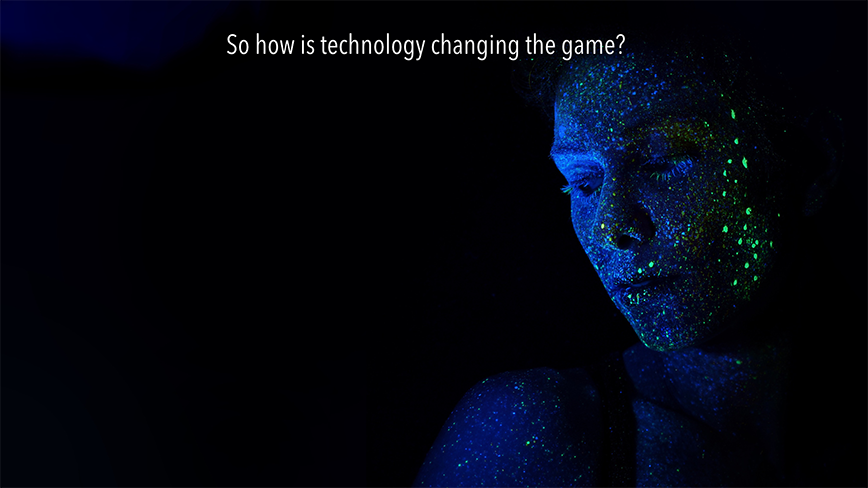
Continuing on with the road safety theme, I just want to share this campaign from Argentina. Addressing a very real and very big issue, Samsung went down the path of technology to help create an outcome with measurable impact.
All across the world, advertising agencies and technology companies are being approached to tackle health and safety issues. The advertising team at Grey were presented with a problem in India. Millions of women across rural India suffer from Breast Cancer, Fibrocystic Breast Disease and complications during pregnancy. Most of these cases are linked to an iodine deficiency. While pills and supplements were available, the usage was low, so they had to tackle the problem in a different way.
And finally, Saatchi and Saatchi in New York teamed up with Mended Little Hearts, the organisation that supports children with congenital heart defects and their families to show people what will happen if they give.
This is a new campaign but I love how neatly it combines technology with reinforcement. And basically if you watch the whole story and bring it all to life and then don’t donate, you’re a bit of a dick.
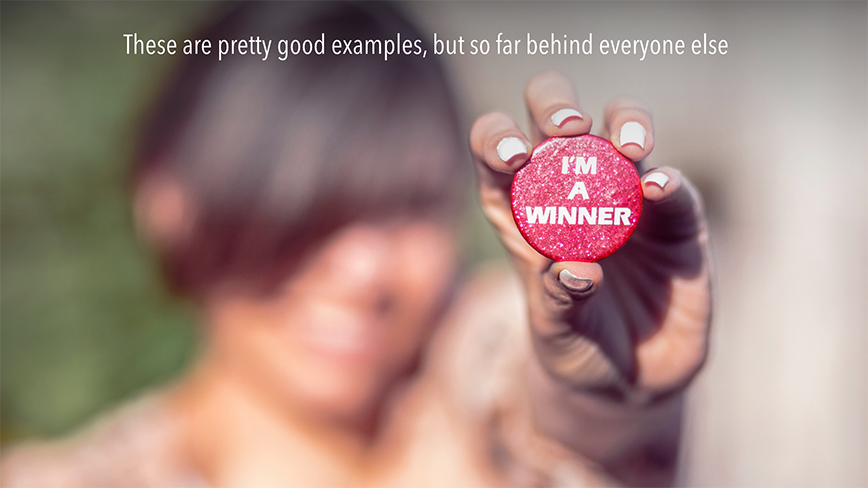
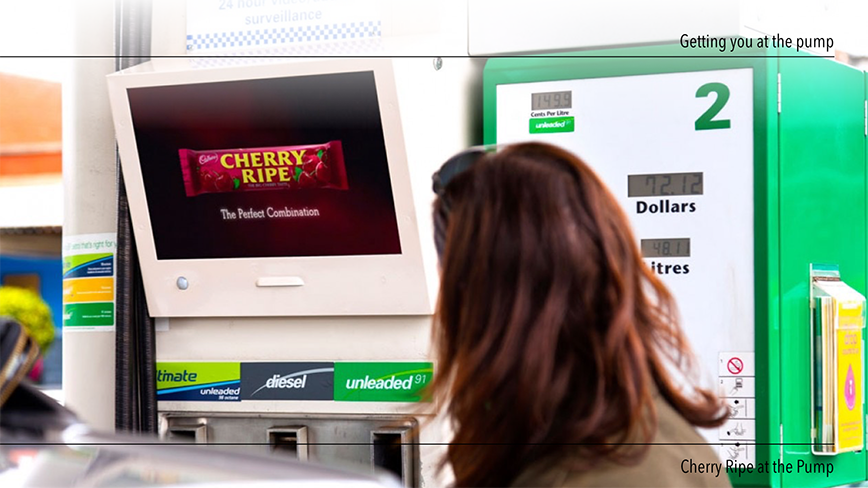
One of the first examples of really good digital combinations was from Cherry Ripe. This campaign combined audience insight with live, real-time facial recognition data. The functionality allows for the overlaying of historical data to identify when the Cherry Ripe target audience is most likely to be paying attention to the screen at the petrol bowser and serve messaging accordingly.
Australian data analytics company Quantium were acquired by Woolworths to help improve their customer profiling and start to develop personalised communications.
What isn’t covered off here is that Quantium has also partnered with NAB, so they could cross datasets from your broader spending habits and credit card usage to understand not only what you might like to buy but when you’re most able to buy it.
Obviously there are privacy concerns here, but both Woolworths and NAB will use the same key to give random IDs to each record. So Woolworths and NAB know who the records belong to, but Quantium doesn’t. They merely provide the conduit.
Coca-Cola is obviously one of the biggest brands in the world and their ability to create incredible, engaging campaigns is second to none. They have the luxury of budget and also with Coke being an FMCG (or fast moving consumer goods) product, it’s really easy to tap into the impulse buy emotion.
Again created by advertising giants Ogilvy and Mather, the campaign relies so heavily on technology. But it managed to engage with a huge audience, in a way that is relevant and based on existing behaviour. It is simultaneously novel yet comfortable.

But now I wanted to go full nerd and show you two side by comparisons of how males and females reacted to a Snickers advertisement. Using technology from a company called Neuro-Insight, they measured brain activity to see how 50 females and 50 males respond to the ad.
The technology allows them to simultaneously record viewer’s second-by-second changes in approach (like)/withdraw (dislike), emotional intensity, engagement and memory whilst watching advertisements.
To me, this is incredible. Understanding how, when and why people respond to different messaging is the mecca of communications. And this is incredibly lucrative business.
If anyone is interested in learning more, I suggest looking at the company called PHD. They developed a propriety piece of software to enable their media agency to micro-target people and create online and offline advertising. It was so successful, last year they become the sole media agency of VW and all of their car brands. An account worth three billion dollars.
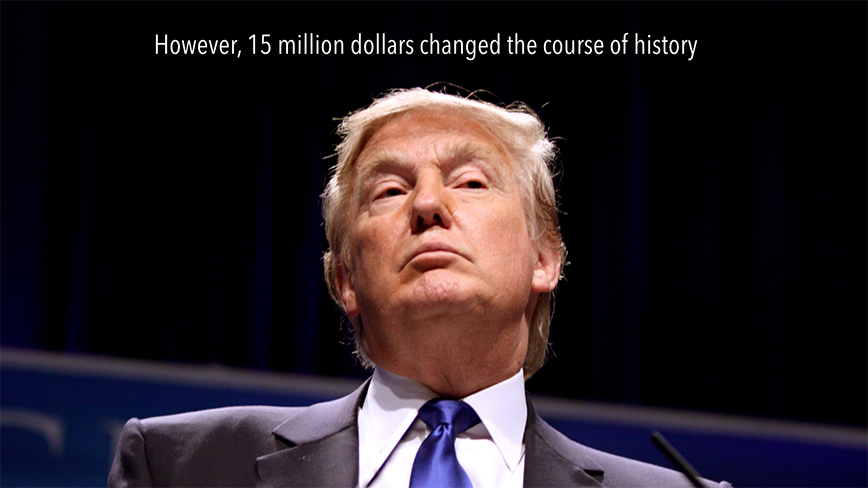
Hands up who has heard of Cambridge Analytica and Alexander Nix.
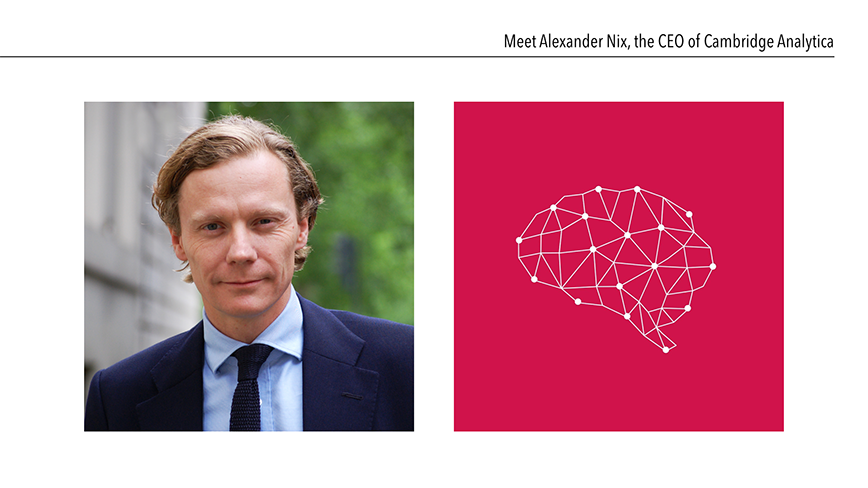
These are the people responsible for running the digital marketing for Donald Trump.
Their psychologists ran a huge number of tests across America, mostly fueled by social media quizzes and were able to target populations based on psychologists ‘big five’ personality traits: openness, conscientiousness, agree-ableness, extroversion and neuroticism.
Leveraging these insights, on the day of the third presidential debate between Trump and Clinton, Trump’s team tested 175,000 different ad variations for his arguments, in order to find the right versions above all via Facebook.
The messages differed for the most part only in microscopic details, in order to target the recipients in the optimal psychological way: different headings, colors, captions, with a photo or video. They did this type of work over three months, and drastically changed the approval ratings and thus votes for Trump.
This made the company about fifteen million dollars.
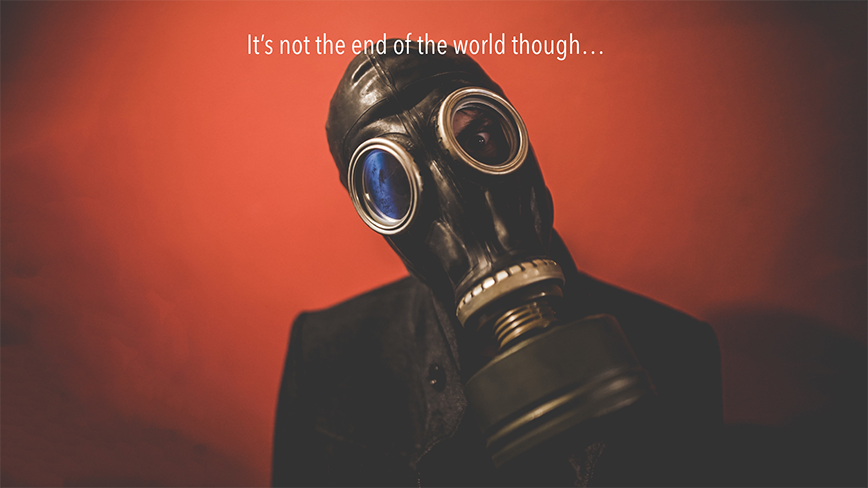
Now I’ve thrown a lot of information at you. Some good, some probably terrifying. But I do this to show just how quickly the world is changing, what big brands and bright people are doing, but now I want to talk through how you can apply it and specifically what can be done in the health realm.
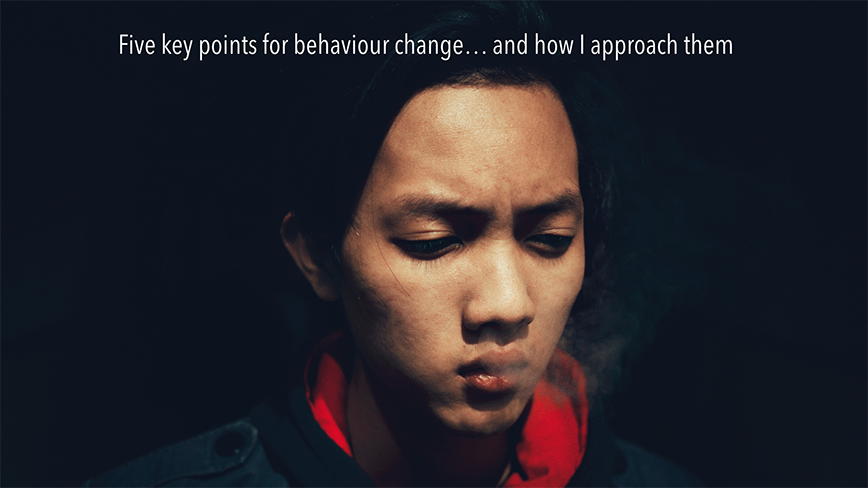
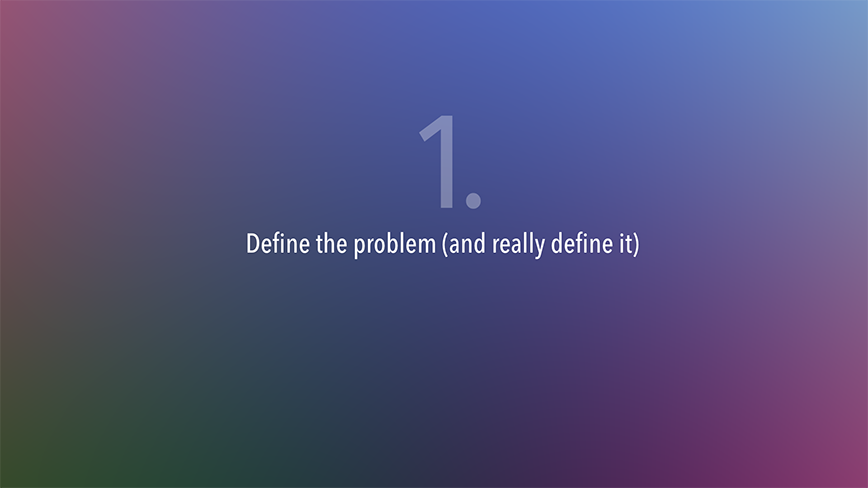
It’s not a matter of saying ‘people are fat’ or ‘kids eat too much sugar’. These aren’t defined problems. They’re known, sure but that’s too broad to start with. Get into the detail. Do your research and start to understand more about the problem set. Get granular.
In my business which I’ll highlight later, we look at the world of dietetics. Our problem statements read like “manually generated meal plans are not tailored, fairly bland or difficult to follow” or “Dietitians receive minimal and poor quality feedback on clients usage of meal plans”. These more defined problems are then easier to address.
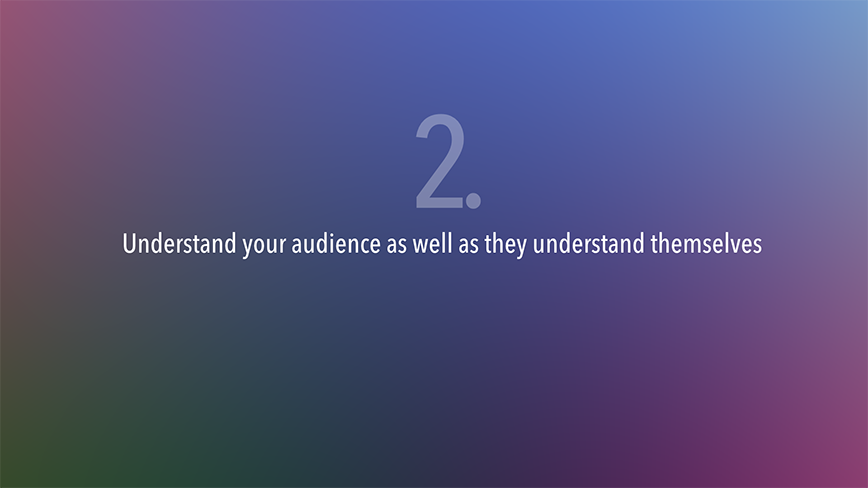
Work with data. Work with marketing and communications specialists. Understand motivations, pain points, things that surprise and delight. Understand what people do on their phones, on the way to work and at home. Find where and how you can access them. It’s hard to connect with someone if you don’t understand them.
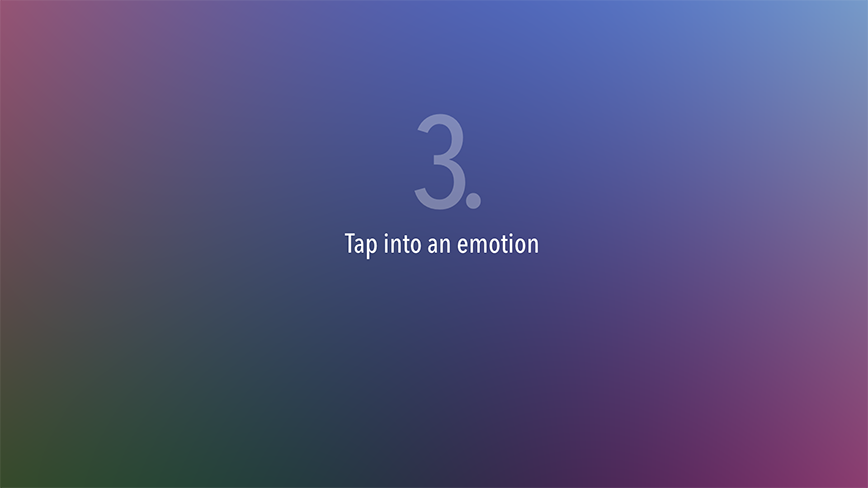
As I mentioned at the beginning, emotional connection is the starting point but it’s not everything. Underlying every behaviour is an emotion. We’ve all such ridiculously complex beings that our emotional drivers vary every day, but there are consistencies. These trends will be uncovered when you start to understand your audience.
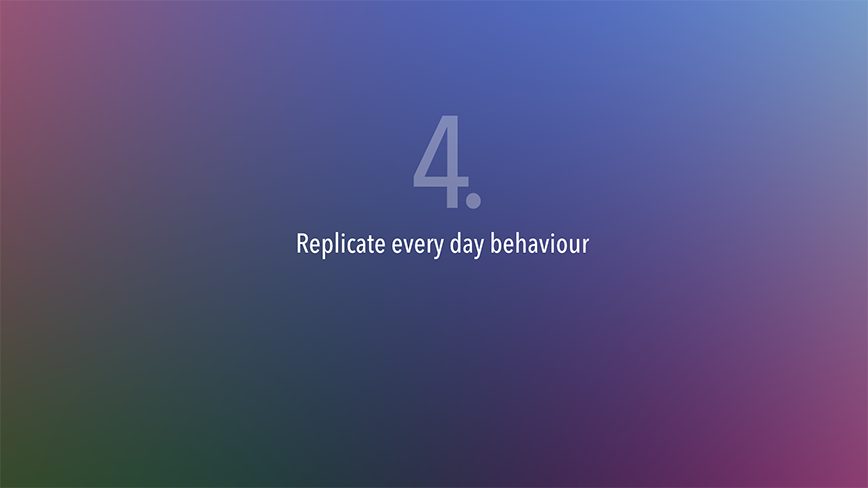
No one really likes being told what to do. We all like to think we’re creatures of free will. And while that’s largely true, it also means we can build connections based on every day behaviour and slowly start to influence them. Humans, particularly adults don’t wake up one day and start doing things differently. It takes time. It’s easier to start a new habit than break an old one. Framing ways of behaviour change in a positive way is better than telling someone ‘no’.
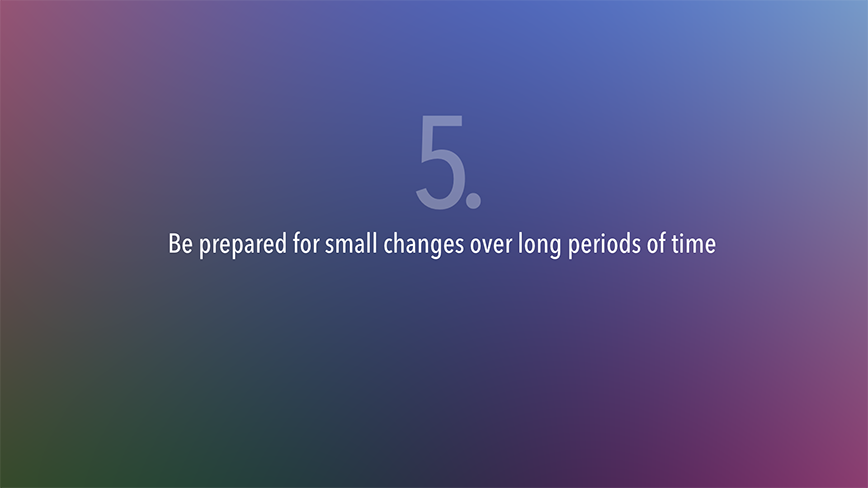
Depending on what you read, some literature would suggest that forming a new habit takes between 21 and 30 days. Recently that has started to be proven incorrect and further studies are showing that it takes anywhere from 18 days to 254 days for people to form a new habit. This obviously depends on the type of habit. I view this device [the smartphone] as the biggest opportunity for behaviour change out there and finding ways for meaningful connections can unlock long term behaviour change.
It’s so important for your work to not only understand that people won’t change overnight. And some may never change. But you need to learn to be comfortable with that and manage your own expectations.
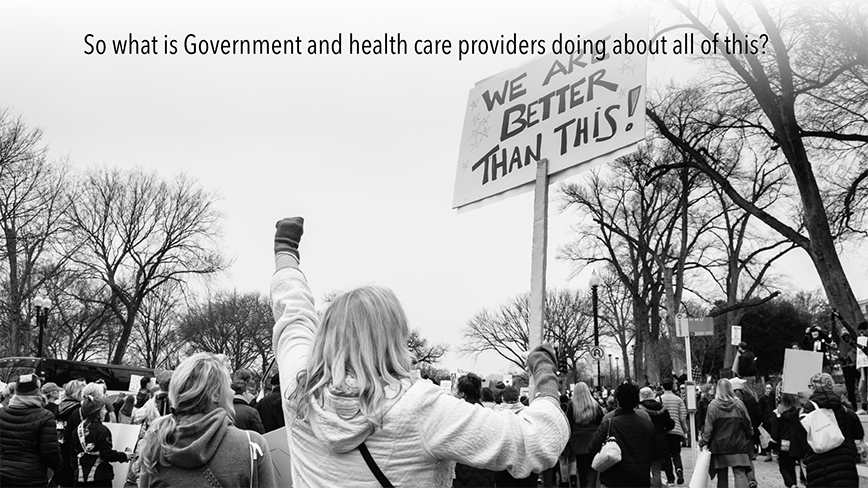
Last year, one of the biggest challenges I tackled was to write the first whole of department digital strategy for the Department of Health and Human services.
Just think about that for a second… A government department responsible for the health and wellbeing of every Victorian had never had a cohesive strategy for managing digital channels or for migrating services to digital delivery.
It was probably the most intense piece of work I have ever conducted. Not just because of the sheer scope, but also the time in which it had to be done. I want to talk about two particular findings to try and illustrate how far behind the times the government is and some of the recommendations I made to improve their standing.
The first and most complex was a services overview map.
We attempted to visualise every stage a person goes through, from prevention to long term management. Within each of these stages are the types of activities that deliver health and human services, the external users, providers, agents and stewards.
Every single one of us tracks in and out of this service map as we engage with various services. Every engagement creates a data point. As a digital strategist, it is my job to identify where there are either gaps in data capture or excess volumes of data, known as breaking points.
With gaps in data, it becomes a job to enable better capture and then analysis. With excess volumes comes the need to provide better services that increase efficiency or effectiveness. They are the high volume and high usage areas that can be improved through digital delivery.
What we found is that the department not only didn’t know how people moved across this service map, they couldn’t even identify an entire list of services they provided. It wasn’t that the data wasn’t consistent, it’s just that it simply didn’t exist or wasn’t shared. It came about because there was no understanding of the role government plays.
The second was to redefine the role that government should be playing, particularly in health. One of the big mandates that government has is around ‘citizen centered design’. That is, putting people first and designing solutions to meet their needs. While the intention of this is correct, the methodology is wrong because unlike true service design, this approach skips a crucial step: the provider.
In this approach, the person delivering the services, whether they’re health or human services is missed and therefore they are not engaged or worse are alienated. If this occurs, uptake of new products and services will not occur. People will revert to their existing behaviour because they don’t feel supported or acknowledged. Its one of the biggest failings of the PCEHR or my health record as its now known.
Government should play an infrastructure role, acknowledge that it is too large and too slow moving to currently be a leader, and instead focus energy on enabling smaller more nimble organisations to create innovation within an acceptable framework of security and outcomes. Which is now where my focus lies.
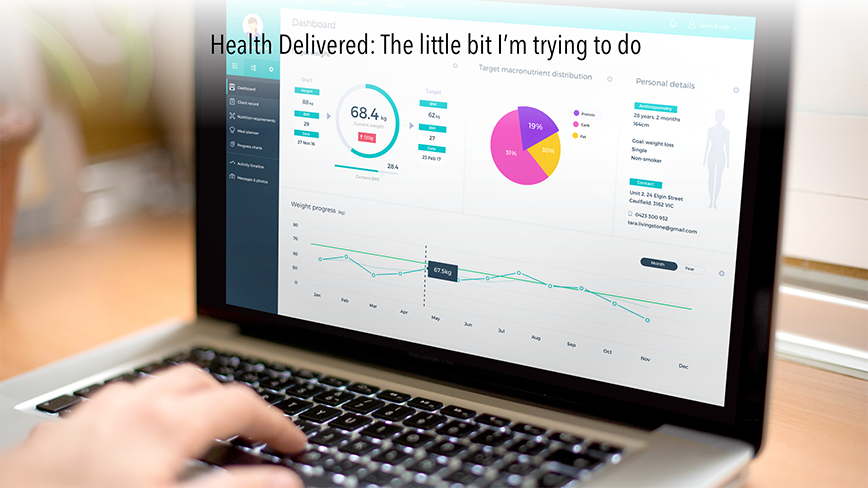
Since the middle of 2015, a small group of us have been working on Health Delivered.
Health Delivered is a dietary management platform designed to tackle the growing rates of obesity, diabetes and other chronic health issues. The platform combines real time and remote monitoring, personalised meal planning, in depth food profiling, client communications and the integration of medical and wearable devices.
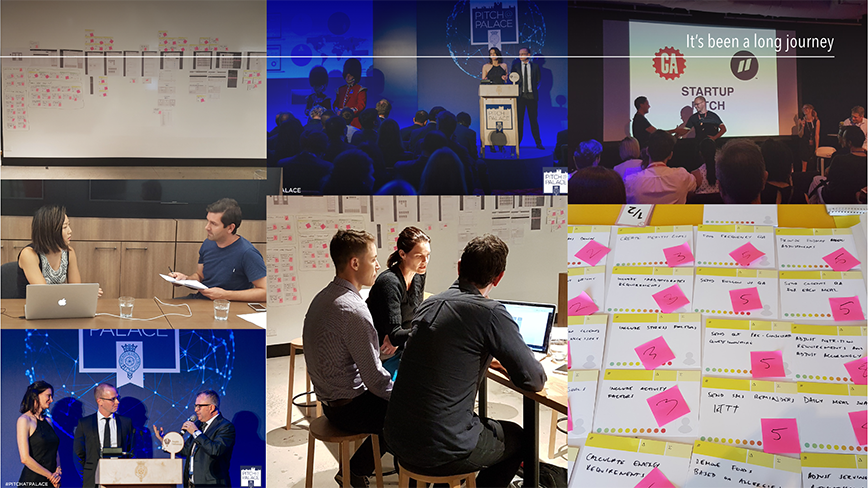
We’ve approached this by starting with the dietitian and understanding their world. Getting right into their problems, their jobs to be done, what they wish they could do and what we might be able to enable. We were able to define the problems neatly, and start to build out solutions.
We did this with dietitians at every step of the way. We understood that they wanted to be more efficient, effective and accurate in their practice. And that fundamentally they wanted to capacity to see more people.
To start to build the product, we have combined the decision making process of a dietitian, structured data sets for health information, a food database of over 200,000 products with 40 micronutrient markers and a user friendly interface.
But that’s just for the dietitian. For clients, we provide personalised meal plans on their phone that they can log whenever they have eaten something. They can give feedback on what they like and don’t like so the system learns over time.
So here is a quick walkthrough of the product as it stands. This is the dietitian view, but you can see easily how to get a snapshot of current clients and how to see their individual progress in one screen.
You can refer to their client record and track progress over time. This allows us to build in notifications when a client may be slipping from their objectives and create an intervention point.
We can manipulate a person’s health goals live based on their energy requirements, macronutrient requirements and in the future get into the granular details.
This automatically translates to a meal plan that converts to serves (the language of dietitians), to individual meal components and then to full recipes.
In the future, we want to aggregate this against meal delivery services and provide the best match, so anyone can order their ideal meal plan… whether it’s a grocery box from Coles or Hello Fresh. or fully prepared meals from YouFoodz or others.
My goal is to turn this into a population health tool, as with enough volume of data running through this, it will be possible to identify health trends at a local level and start to provide insights to government and health agencies about where and how to invest their money and services.
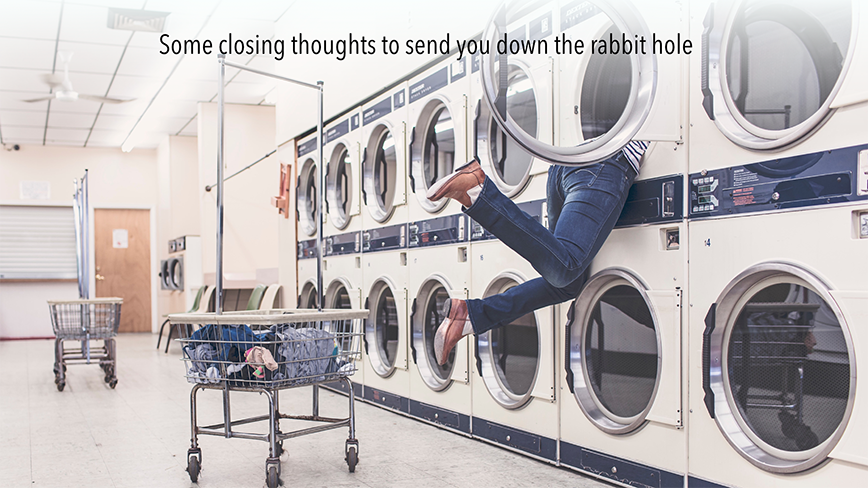
To finish, I would like to leave you with a few things I’ve learned along the way and hopefully inspire you to go out and make a difference.
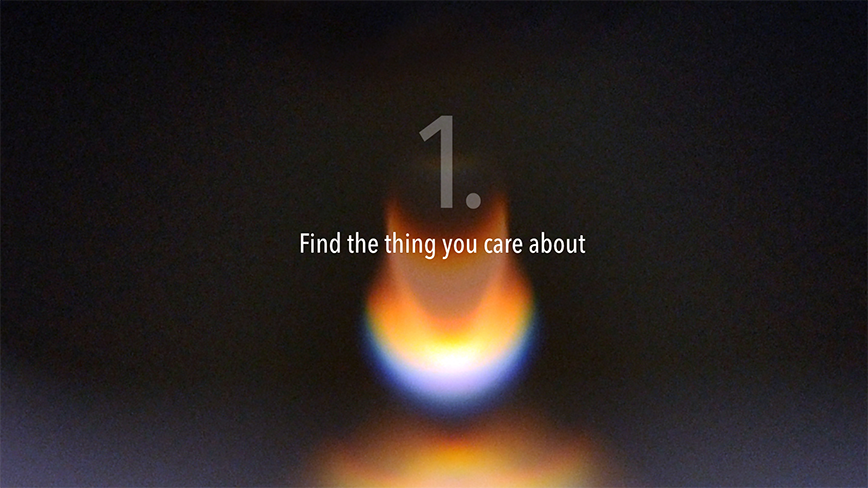
Everyone is motivated by different things. And that’s ok. But find the thing that interests you most.
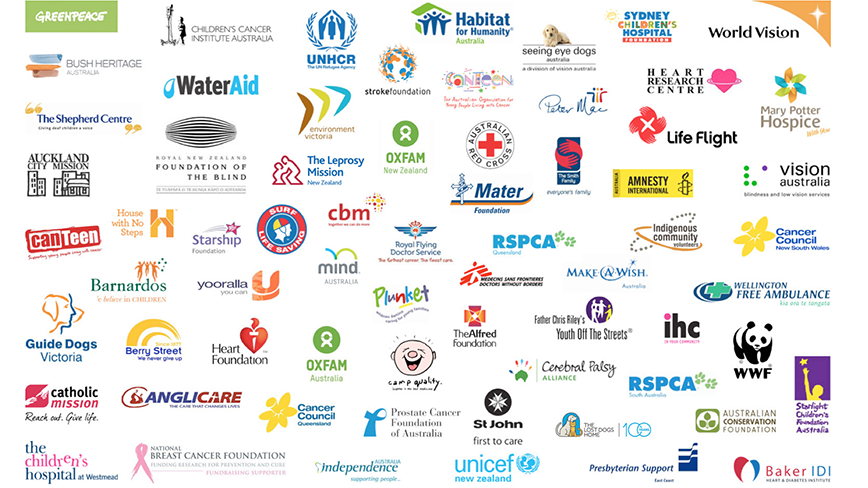
This is a quick snapshot of some of the not for profits that operate in Australia. But there are hundreds of thousands. You cannot care about all of them. Anyone who tries to will quickly care about nothing. When you find the thing you love, make that your calling.
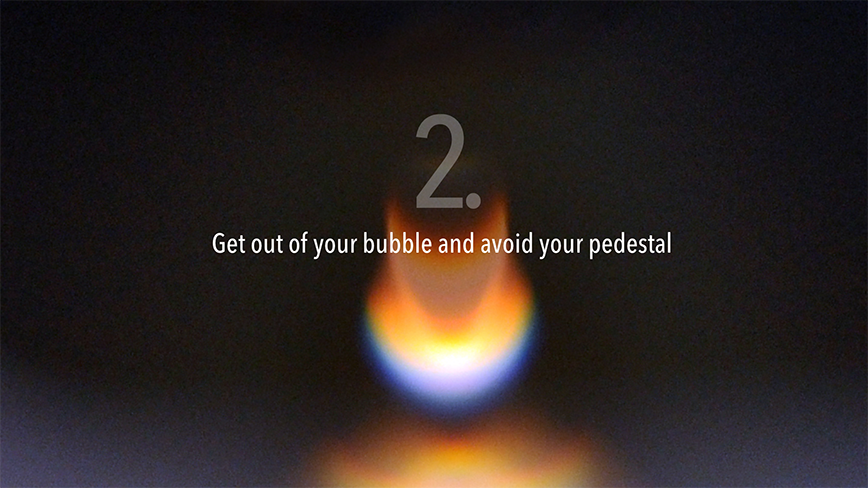
Every sector has its share of jargon. And health has some of the worst. For a while, I sat on the board of Global Ideas and a big part of my role was to demystify the terminology that’s overused in global health. We wanted to attract different markets, but the language was alienating.
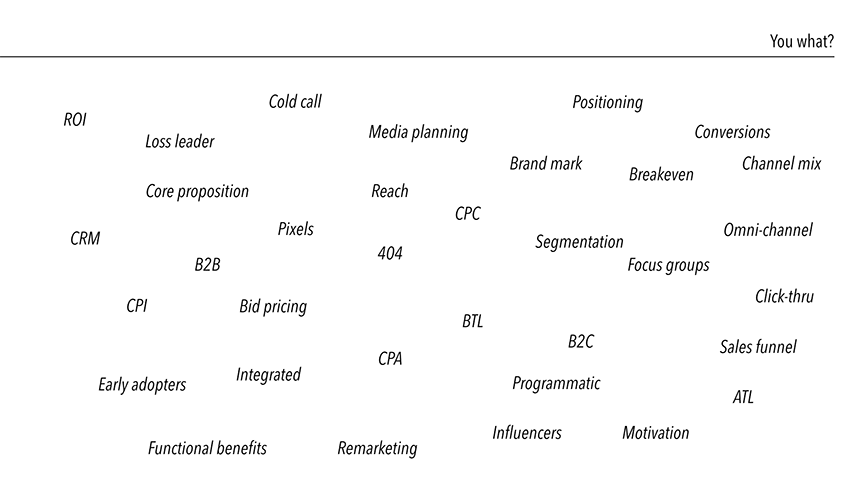
Now hands up who understands more than a couple of these terms. See to me this is normal language, but to anyone else it’s incomprehensible. And that’s what non-health people see when they see health jargon.
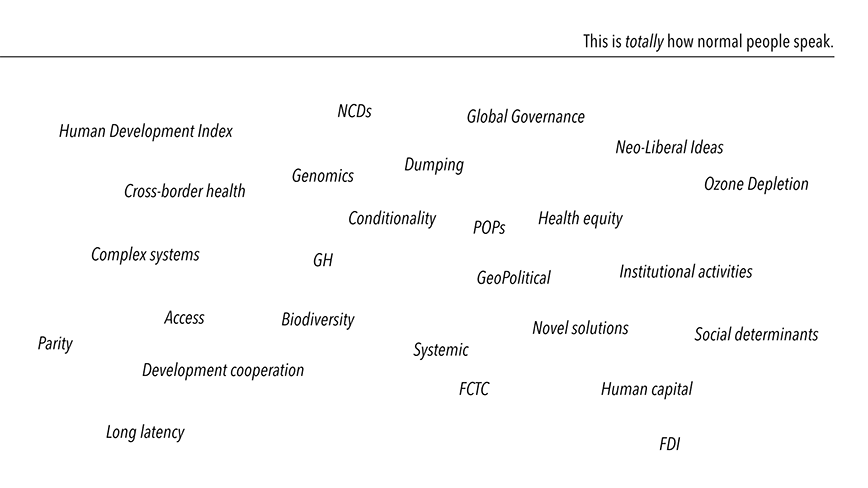
To ram this point home, I used this slide. It was a quick grab of some of the terms used in global health. Probably looks familiar to you.
Think about your audience. Just because they don’t understand the world like you do doesn’t make them stupid. In fact it’s your job to understand their world and find ways to relate. If you treat people with contempt or like they’re beneath you, you have lost. You will not change their behaviour.
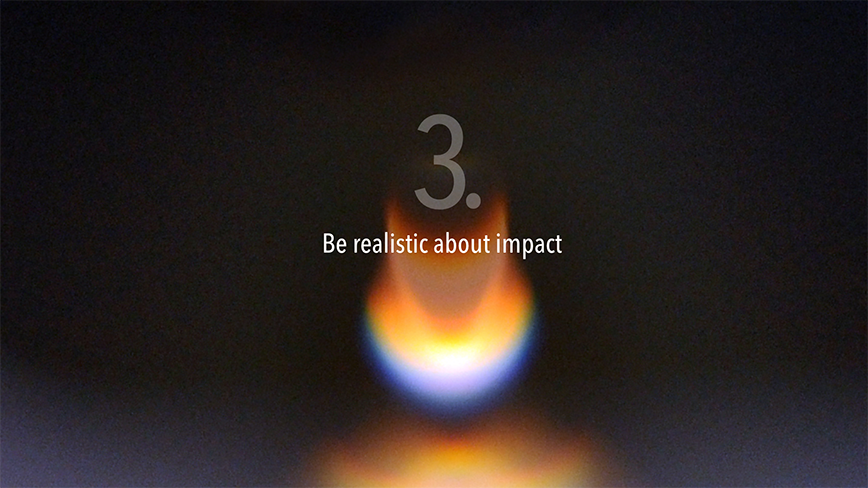
When I asked you to think about the phone ads, I asked who would realistically change their behaviour. I did this because the metrics of impact have changed dramatically. Traditionally, the number of eyeballs was important. A million this, a million that.
But that doesn’t matter anymore. What’s more important to you? A million people who don’t do a thing, or 1000 people who are actively engaged in what you’re doing.
Seriously consider what impact means to you, because it’s impossible to boil the ocean, particularly in health. Start small and build over time.
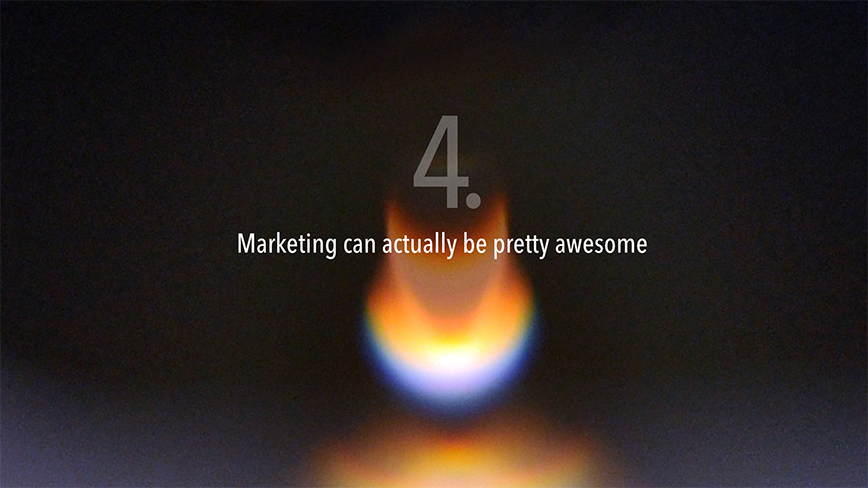
So much of what I’ve talked about requires people who understand other people. Don’t shun marketing because you think it’s dirty. Embrace it because we’re the ones who can translate your knowledge into the actions of others.
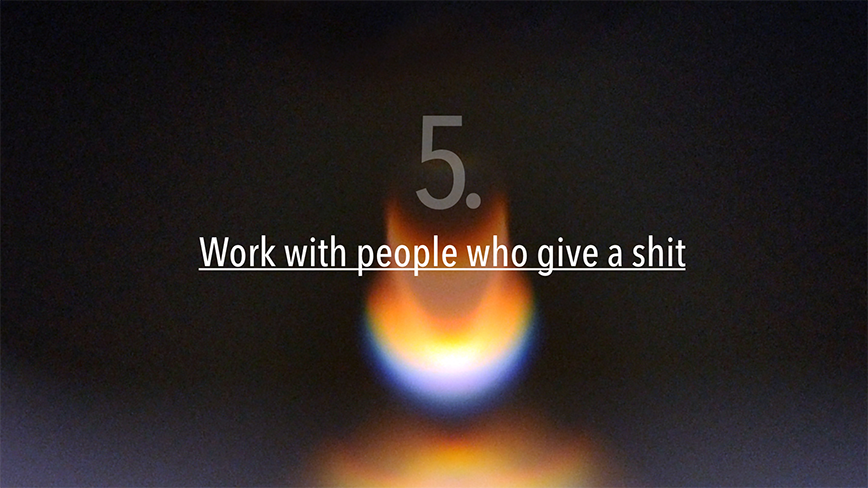
I’m one of them and there are plenty of people out there like me.
A successful health campaign requires the input of designers, engineers, data scientists, writers, developers and plenty more. Innovation in healthcare comes from a bunch of people with a bunch of different backgrounds.
You’re in a unique and enviable position to go out and create something amazing. The people and the tools exist. Those people who give a shit just like you are out there. Go and find them. Talk to them. Have drinks and talk about crazy ideas and solutions to the problems that matter to you. Because when you do, awesome things happen.
